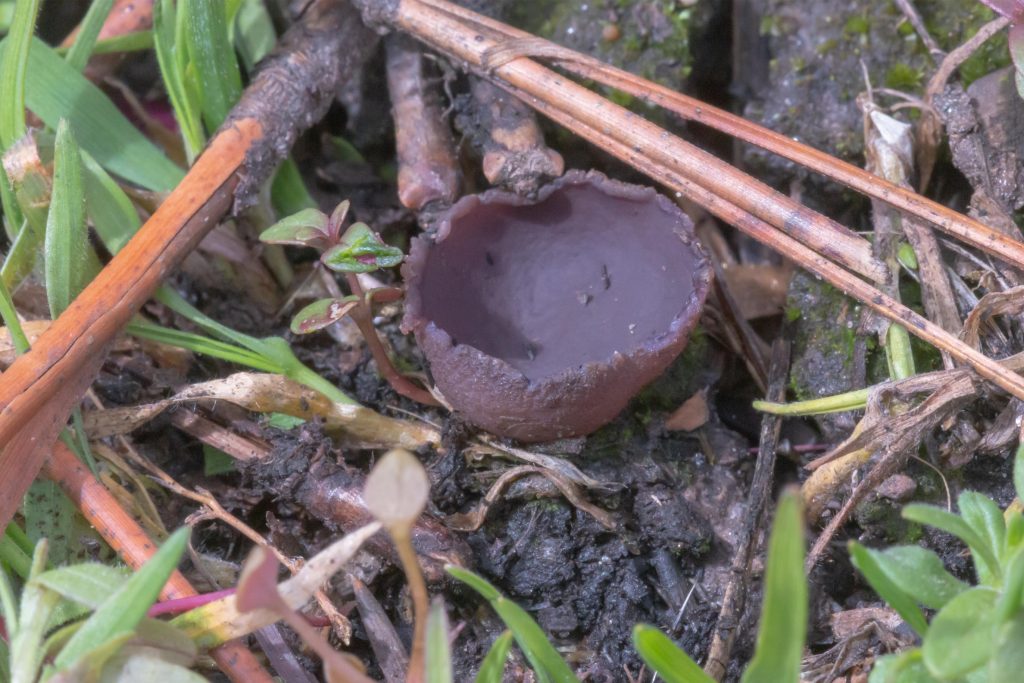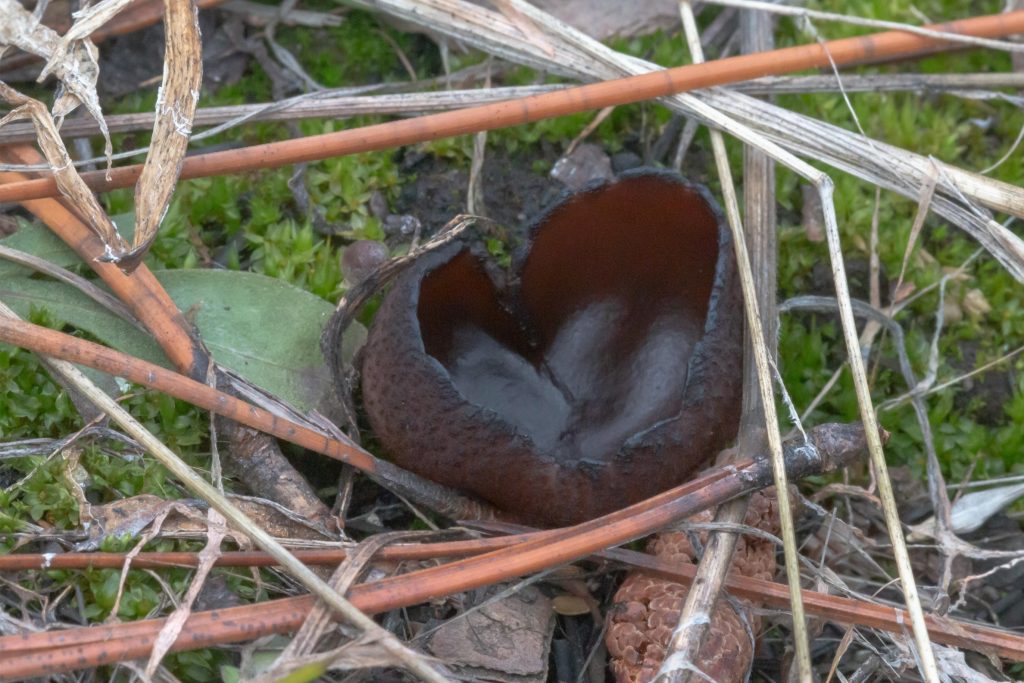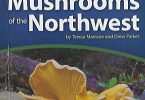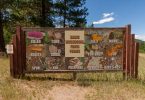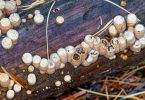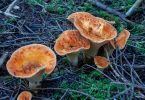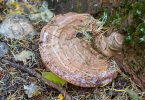What is a snow bank mushroom?
Just about all published field guides to mushrooms mention “snow bank” mushrooms. Yep, a number of mushroom species “fruit” with the exposure of ground immediate or soon after the melting of snow. However, this is restricted mostly to the American West of montane elevations (Trudell and Ammirati 2009). Hard to believe, isn’t it? Arora (1986) has a long list of mushrooms associated with this phenomena. I have looked informally for these fungi in the past with mixed success. Armed with this experience I decided to go on an adventure to find more or new snow bank mushrooms.
Where to look
I went to one of my favorite wildlife watching places which is Bass Creek Recreation Area (Stevensville, MT). There is a spot not far from the trailhead where trash has been illegally dumped in the past (not anymore) – it is a early wildflower hotspot. It earned hotspot status because it faces southeast with an open Ponderosa Pine canopy allowing the sun to fully illuminate the ground. The conditions at arrival were a mix of partly sunny with a snow squall (play video above).
Success
There were Sagebrush Buttercup (Ranunculus glaberrimus) in flower immediate of where I parked just off the gravel road. Leaves of several other species were visible, but none were in flower. I got off the trail to photograph a nice expanse of buttercups when I noticed a number of mushroom in front of me, hey-hey!
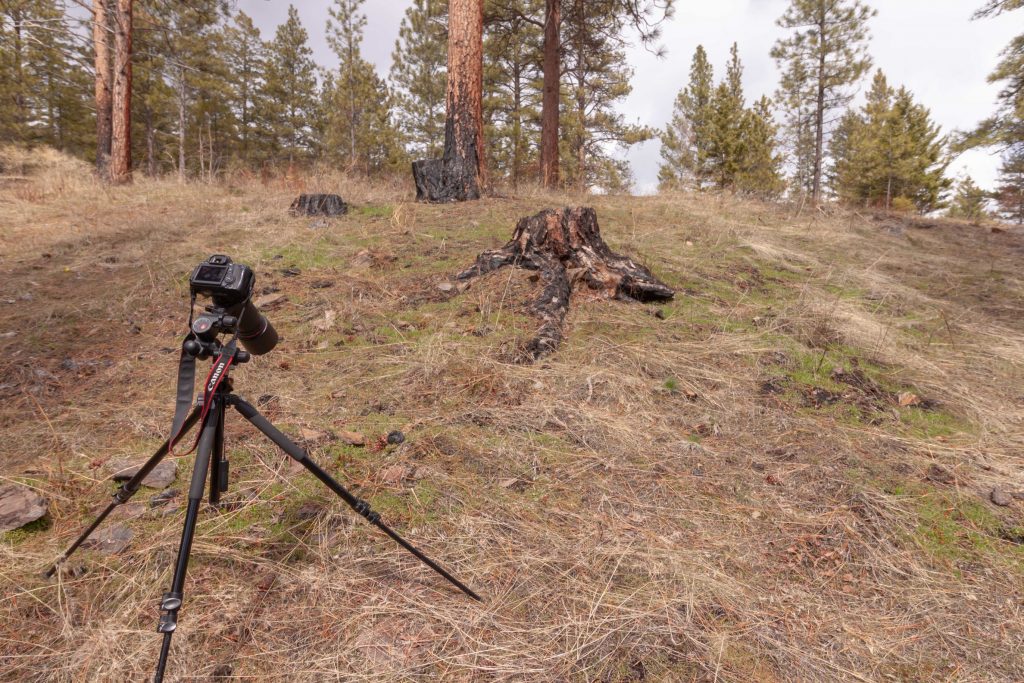
I switched cameras and lenses and took a overhead wide angle shot of the small, rich brown colored mushroom coming out of the soil (photo below). If you look closely, you can see the “black”, carbon residue from a “back fire” set to stop the advance of the 2017 Lolo Peak wildfire. The action was a success and “saved” this part of the National Forest from a stand replacement cycle of 100 years or so.

Fire created habitat
I thought to myself that the black carbon may have played a part
(absorption of heat from sun rays) in producing the number of mushrooms here. Wasn’t seeing any mushrooms to this degree a short distance away. As I continued to scan the ground I spied something different, a small (5-15 mm, published size reported by Davis, Sommer and Menge [2012]) cup fungi brownish yellow in color.
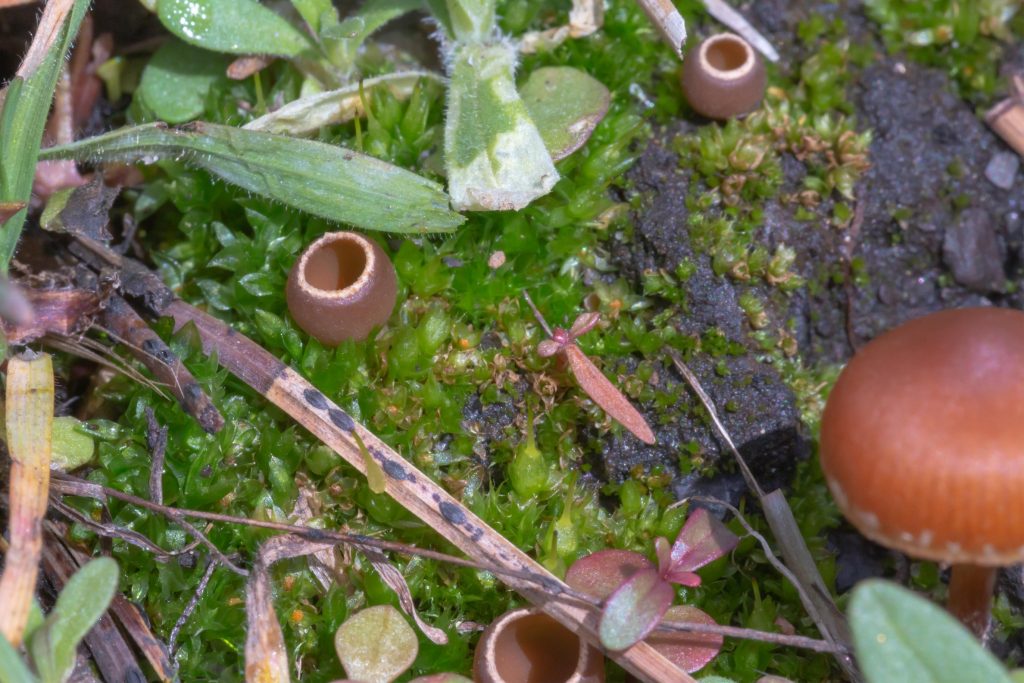
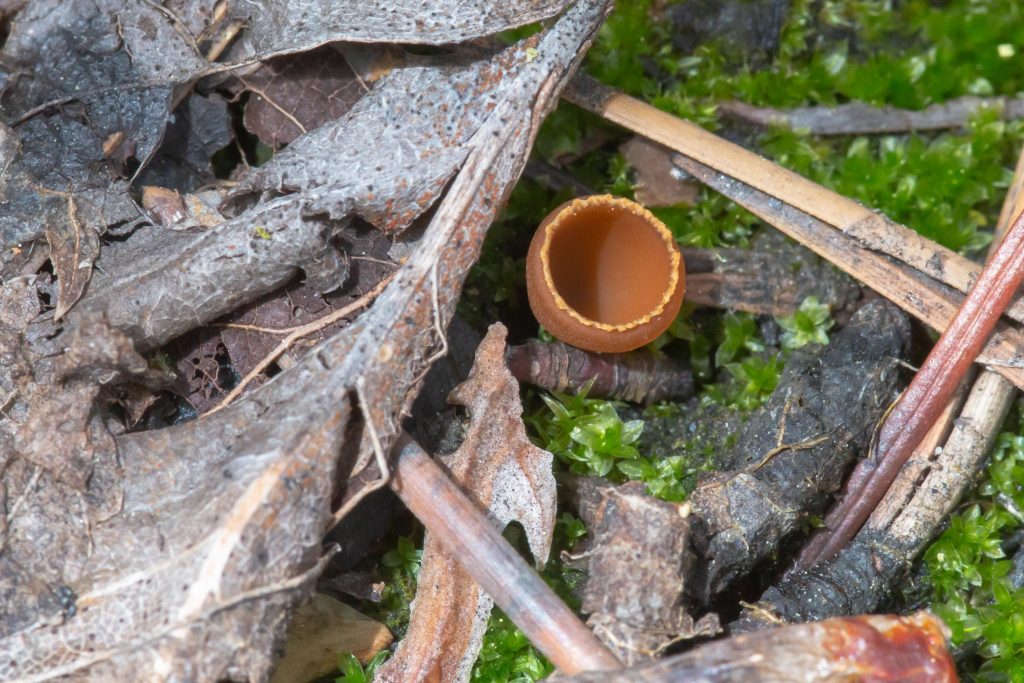
I identified it as Geopyxis carbonaria. This mushroom is classified as a Ascomycete. Mushrooms with this designation produce “spores” (akin to seeds of vascular plants) inside a sac called an “asci”. The asci would be a structure on the inside of the cup pictured above. This is much different from a “capped” mushroom with gills upon which “basidia” externally produce spores. Gilled mushrooms are what we buy at the store and that most of us have a mental picture as a “typical” mushroom or a Basidiomycete. Reference Evenson and Denver Botanic Garden (2015) for extensive drawings and narrative on this distinction.
Seventy-five percent of all described mushrooms are Ascomycetes (Beug, Bessette and Bessette 2014). Below is another cup fungi I found, purplish colored Peziza violacea. Larger than the Geopyxis above, but still small. I included a photo of an older specimen as an example of variation over time…just like us 🙂
